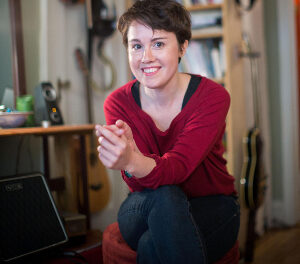The Winston-Salem Symphony, under the baton of Music Director Robert Moody, presented an evening of music by composers who have written scores for film: John Williams (b. 1932) Erich Korngold (1897-1957) and Dmitri Shostakovich (1906-1975). The evening opened with the most famous.
The film scores of Williams are some of the most successful and popular in motion picture history. Star Wars, Jaws, Superman, E.T., Indiana Jones, Jurassic Park, Schindler’s List, and Harry Potter are only some of the movies that boast his iconic music. The 2011 score to the Steven Spielberg movie War Horse was nominated for both the Oscar and the Golden Globe Awards, and the music Dartmoor, 1912 from the film served as the concert opener.
The short piece begins with freely played flute solos that alternate with lush string sounds conjuring up the British countryside. Kathryn Levy played these solos, as well as many others throughout the evening with sensitivity and musicality. The pastoral mood gives way to more epic sounds as well as rhythmically-excited passages. The WSS gave the evocative score all that one could ask for.
Erich Korngold is touted as the first internationally recognized classical composer to write Hollywood scores. His music was particularly well-known in connection with swashbuckling films starring Errol Flynn. His scores to Anthony Adverse (1936) and The Adventures of Robin Hood (1938) garnered him two Oscars. The young composer emigrated to the U.S. with the rise of Nazism in his native Austria in 1934.
His Violin Concerto in D, Op. 35 (1945) is in three movements and calls for a large orchestra with an augmented percussion section: timpani, bass drum, cymbals, gong, tubular bells, glockenspiel, vibraphone, xylophone, and celesta. The work was dedicated to Alma Mahler whose husband, Gustav, had been Korngold’s childhood mentor. It was premiered by the St. Louis Symphony with Jascha Heifetz as soloist.
Guest violinist Charles Yang was certainly a worthy advocate for this super romantic score. The opening Moderato nobile makes use of themes from Korngold’s film scores and spotlights the soloist from the first measure, initially with an introspective mood. Soon however, the character changes, and Yang dove into the fast fiddle work with abandon. A cadenza in the middle of the movement put the young violinist through his paces, which didn’t present any problems for the technically sound musician.
The Romanze allowed for more lyricism and, like the first movement, made use of the violin’s stratospheric range. The Finale Allegro assai vivace was a hoedown type dance, with the soloist often doing the foot stomping and fireworks galore.
Yang’s intonation was spot on, and his rhythmic vitality was terrific. The Boston Globe stated that he “plays classical violin with the charisma of a rock star,” and I would have to concur – dressed in tight black jeans with boots, and interacting physically with the music. Maestro Moody carefully kept soloist and orchestra in synch.
Shostakovich was born in St. Petersburg and studied at the Petersburg Conservatory. His Symphony No. 5 in D minor, Op. 47, was composed in 1937 after he received intense criticism from the Soviet press for his opera Lady Macbeth of Mtsensk. The symphony carries the composer’s subtitle “A Soviet Artist’s Reply to Just Criticism.” The work is in the classic sequence of four movements and follows Beethoven’s Fifth Symphony trajectory, beginning in minor-key gloom and ending with major key heroism. It is probably the most frequently performed symphony of the 20th century.
The opening movement, Moderato – Allegro non troppo, began with just about as much intensity as Moody could muster from the forces, and that was plenty. The second theme soars with lyricism. The development section brings on some violent clashes of forces. Some unexpected intonation problems from the viola section and some horn flubs did not detract from the overall drama of the movement.
The Allegretto is a frolicking Scherzo with lots of outbursts from the sections of the orchestra, often, in a satirical guise. The third-movement Largo opens with music solely for strings in a hushed and introverted fashion, a perfect foil to the wild second movement. Solo winds eventually enter with haunting harp accompaniment and the music intensifies to an incredible level. The movement ends with sustained strings, accompanied by gentle harp plucking.
The opening of the Finale obliterates the intense beauty of the third movement with a militaristic brass fanfare. Many new themes follow, both lyric and bombastic. One would be amiss if concertmaster Daniel Skidmore‘s solo playing was not pointed out for its elegance. But there were so many magnificent solos that to name them all would be to point out the principal chairs of almost all the sections. Bravo to all for a brilliant reading of this magnificent score.
WSS will repeat this concert Sunday afternoon, March 5 at 3 pm and again on the evening of March 7. See the sidebar for more information.












